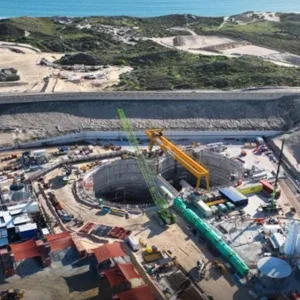Earlier, a team of experts conducted a test flight to calibrate the equipment.
Dowchu Drukpa, head of seismology and geophysics division, said there is a change in survey plan.
"Now the survey will be conducted parallel and not perpendicular to the line between starting and end points of the tunnel," he said.
SkyTEM, a Danish consultancy firm specialising in geophysics surveys, is conducting the survey using a helicopter and the latest technology. The survey is a joint project between Norwegian Geotechnical Institute (NGI) and Bhutan’s Geology and Mines Department (DGM).
The helicopter hired by SkyTEM hovered over Thimphu carrying a large hexagonal metal ring as a test run for the feasibility test. The ring sends electromagnetic waves into the ground to gather resonance of varying magnitude from different materials underground. It helps experts collect a detailed picture of types of rocks under the earth.
The technology can map the near-earth surface in high resolution to depths approaching 500m.
DGM provided wind data of a past few years from the hydromet division to NGI officials for analysis.
Norwegian Agency for Development is funding the project worth USD 300,000, and the delay does not cause additional cost to the project.
On completion of the aerial survey, drilling work would begin and a report will be submitted to the government.
DGM conducted the geological and preliminary studies in the first phase that included the "walk on survey" of the proposed tunnel road between the two dzongkhags that begins from Yoesepang in Thimphu to Nabisa in Wangduephodrang.
Should the project come through, the proposed two-lane tunnel will reduce travel time to less than 30 minutes.







